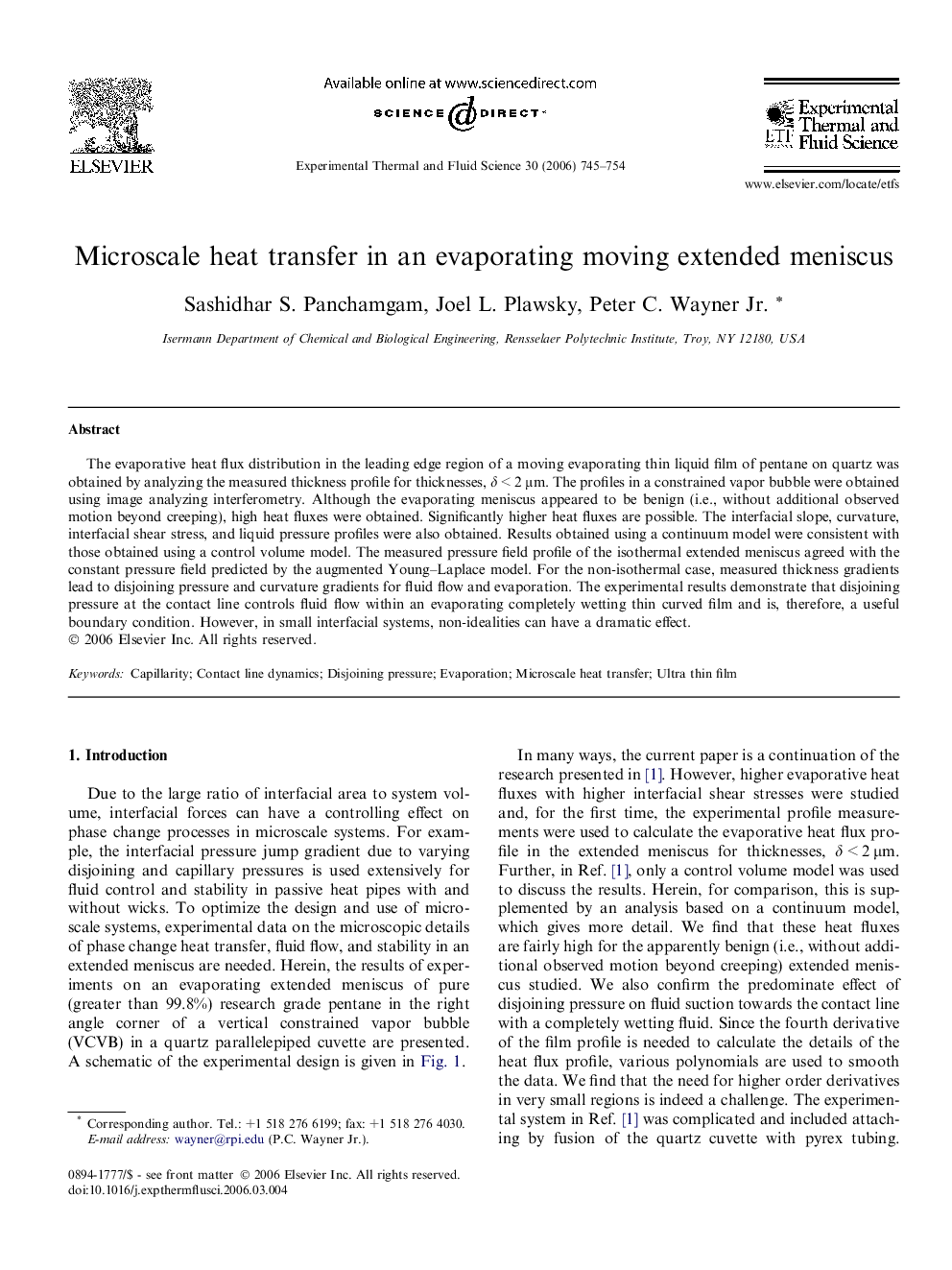| Article ID | Journal | Published Year | Pages | File Type |
|---|---|---|---|---|
| 652784 | Experimental Thermal and Fluid Science | 2006 | 10 Pages |
The evaporative heat flux distribution in the leading edge region of a moving evaporating thin liquid film of pentane on quartz was obtained by analyzing the measured thickness profile for thicknesses, δ < 2 μm. The profiles in a constrained vapor bubble were obtained using image analyzing interferometry. Although the evaporating meniscus appeared to be benign (i.e., without additional observed motion beyond creeping), high heat fluxes were obtained. Significantly higher heat fluxes are possible. The interfacial slope, curvature, interfacial shear stress, and liquid pressure profiles were also obtained. Results obtained using a continuum model were consistent with those obtained using a control volume model. The measured pressure field profile of the isothermal extended meniscus agreed with the constant pressure field predicted by the augmented Young–Laplace model. For the non-isothermal case, measured thickness gradients lead to disjoining pressure and curvature gradients for fluid flow and evaporation. The experimental results demonstrate that disjoining pressure at the contact line controls fluid flow within an evaporating completely wetting thin curved film and is, therefore, a useful boundary condition. However, in small interfacial systems, non-idealities can have a dramatic effect.
